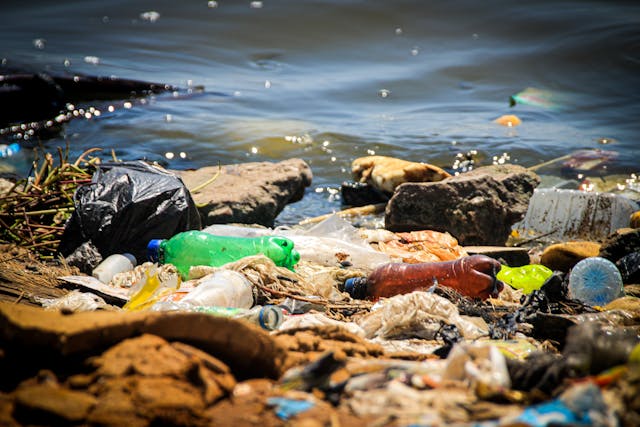How Waste Management Companies Are Innovating for a Greener Future

Think of your last visit to a bustling corporate campus. Alive with impromptu hallway huddles, hurried courier drop-offs, and the never-ending hum of an overworked breakroom espresso machine. Now, it’s the end of the day, imagine the daily tidal wave of trash that accumulates by sundown—partially sipped lattes, dented cardboard shipping boxes, and a medley of abandoned sticky notes. According to the EPA’s National Municipal Waste Report, the United States churns out roughly 292 million tons of municipal solid waste annually, clocking in at about 4.9 pounds per person per day. Meanwhile, the modern waste management company has shed its traditional role as a mere garbage collector. Across the country, this once-unassuming sector is now blazing new trails, coupling corporate efficiency with earth-minded solutions—and transforming our concept of “trash” along the way.
The Pressure to Change: Why Innovation Is Imperative
Executives often view inefficiency as profit’s sworn enemy, and waste is inefficiency incarnate. Whether it’s a factory discarding flawed products or an office tossing reams of paper, excess waste devours both resources and revenue. That’s why a surge of environmental and social pressures now converges on businesses. Regulators are sharpening mandates, consumers are demanding more sustainable options, and investors pay close attention to waste footprints. Even supply chain disruptions—like China halting imports of recyclable scrap—have forced American firms to confront the inconvenient truth: without innovative systems, our mountains of discard keep swelling faster than we can handle them.
But beyond compliance woes lurks a glimmer of possibility. “Zero waste” was once a fringe dream; now it’s an increasingly common corporate pledge. Recent data shows that 74% of large enterprises plan to adopt a “zero waste to landfill” target in the near future. Turning that lofty ambition into a bottom-line win is trickier. Many organizations stumble on how to achieve it in practice—where do they even begin? That’s precisely where forward-thinking waste management partners step in, helping to orchestrate everything from staff training to specialized recycling infrastructure.
Smart Bins and the Internet of Trash
One key leap in operational efficiency lies in sensor-enabled bins, or “smart bins.” Instead of sending trucks along a rigid timetable to empty every container, these bins announce when they’re actually full. After all, a half-empty dumpster is wasted time and diesel fuel. Reports suggest routes can be optimized enough to cut collection schedules by 50% or more, slashing fuel costs and driver hours. For B2B environments, that savings can funnel straight back into core business activities—whether it’s product development, customer service, or scaling new ventures.
These bins also help prevent unsightly (and unsanitary) overflows in corporate campuses or busy downtown corridors. Data-driven waste pickups mean staff can pivot away from guesswork, focusing instead on tasks that create tangible value. When managed correctly, a simple sensor can become a miniature hero, silently optimizing logistics in the background.
AI-Powered Recycling: Robots at the Sorting Line
Meanwhile, the recycling side of the equation has become a technophile’s domain, thanks to artificial intelligence. Let’s be blunt: the U.S. recycles less than 9% of its plastic waste—a glaringly low figure that partly stems from contamination or mis-sorted materials. Enter AI-driven sorting robots. Using advanced vision systems, these robotic arms can identify subtle differences in plastics, metals, or glass in ways that would flummox a human hand. The result? Cleaner recyclables, better commodity prices, and safer working conditions.
Industry adopters of AI sorting claim game-changing results. By removing human error, these robots help divert far more of the useful stuff away from landfills, pushing businesses closer to their zero-waste goals. They’re not an overnight panacea, but their impact on cost savings, resource recovery, and employee safety shouldn’t be underestimated.
Rethinking “Waste” Through the Circular Economy
Progress isn’t confined to gadgets and gizmos. Some waste management innovators shift the entire paradigm by embracing circular economy principles—designing products and operations so that “waste” loops back into use. Instead of transporting organic refuse to landfills, for example, companies can channel it into anaerobic digesters that produce clean energy. Others facilitate industrial symbiosis, matching one firm’s scrap as feedstock for another. Even offices are diving into reuse efforts, collecting and refurbishing equipment rather than discarding it outright.
The upside? Reduced tipping fees, potential revenue from reselling valuable materials, and a reputation for environmental leadership. These initiatives aren’t pure altruism; they can quickly become a competitive edge for businesses eager to future-proof their operations.
Government Policy as a Catalyst
New regulations—like local composting ordinances or statewide waste reduction mandates—often serve as carrots and sticks, coaxing corporations to improve. That might sound burdensome, but truly innovative haulers see policy shifts as opportunities. When a city bans food scraps from general trash, a waste management firm can pitch a composting service, complete with staff training and specialized bins. At scale, policy changes spur an entire ecosystem of solutions: more composting sites, more route-optimization software, and more data-driven dashboards that help businesses prove compliance. Smart companies use these regulations as a springboard for transformation, rather than an inconvenient obstacle.
Operational Excellence: From Routing to Zero Waste Certification
Innovation also thrives in the operational details. Route-optimization software, for instance, helps fleets reduce fuel use by as much as 10–15%. Some waste collectors are experimenting with compressed natural gas or electric vehicles to cut emissions further. Even mundane daily tasks—like training employees how to separate materials properly—can pay big dividends by shrinking contamination rates and improving recycling rebates.
Companies pursuing Zero Waste certifications (such as TRUE Zero Waste) often discover an entire culture shift within their operations. People become more mindful of resource use, which can lead to efficiencies in unexpected places. Moreover, zero waste achievements resonate with clients who prioritize sustainability in their partnerships. In B2B circles, a proven waste reduction record can be the tiebreaker in a competitive bid.
Conclusion: Turning Trash into Opportunity
Waste can feel like a nuisance, but it’s also a clarion call to reimagine the status quo. Technology-forward waste firms are showing that environmental accountability and profit incentives can coexist—even thrive together. Whether it’s sensor-equipped bins, AI-driven sorting, or holistic circular strategies, these innovations let organizations do more with less, all while burnishing their reputation and staying ahead of regulatory trends.
For executive decision-makers, the time is now to pivot from waste-as-a-necessary-evil to waste-as-a-value-driver. Start by asking: how might your business recover valuable materials currently slipping through the cracks? Could your “garbage” power a biodigester or supply another manufacturer’s feedstock? If you haven’t yet, schedule a deep-dive with your waste management team to explore new solutions. It’s not just about cutting trash—it’s about harnessing a resource you never knew you had.
Whether you’re pursuing zero waste or simply aiming to shave off inefficiencies, remember this: an unexamined bin is a missed business opportunity. Embrace these fresh approaches and watch how that once-ignored dumpster can become an unexpected wellspring of both innovation and revenue.



